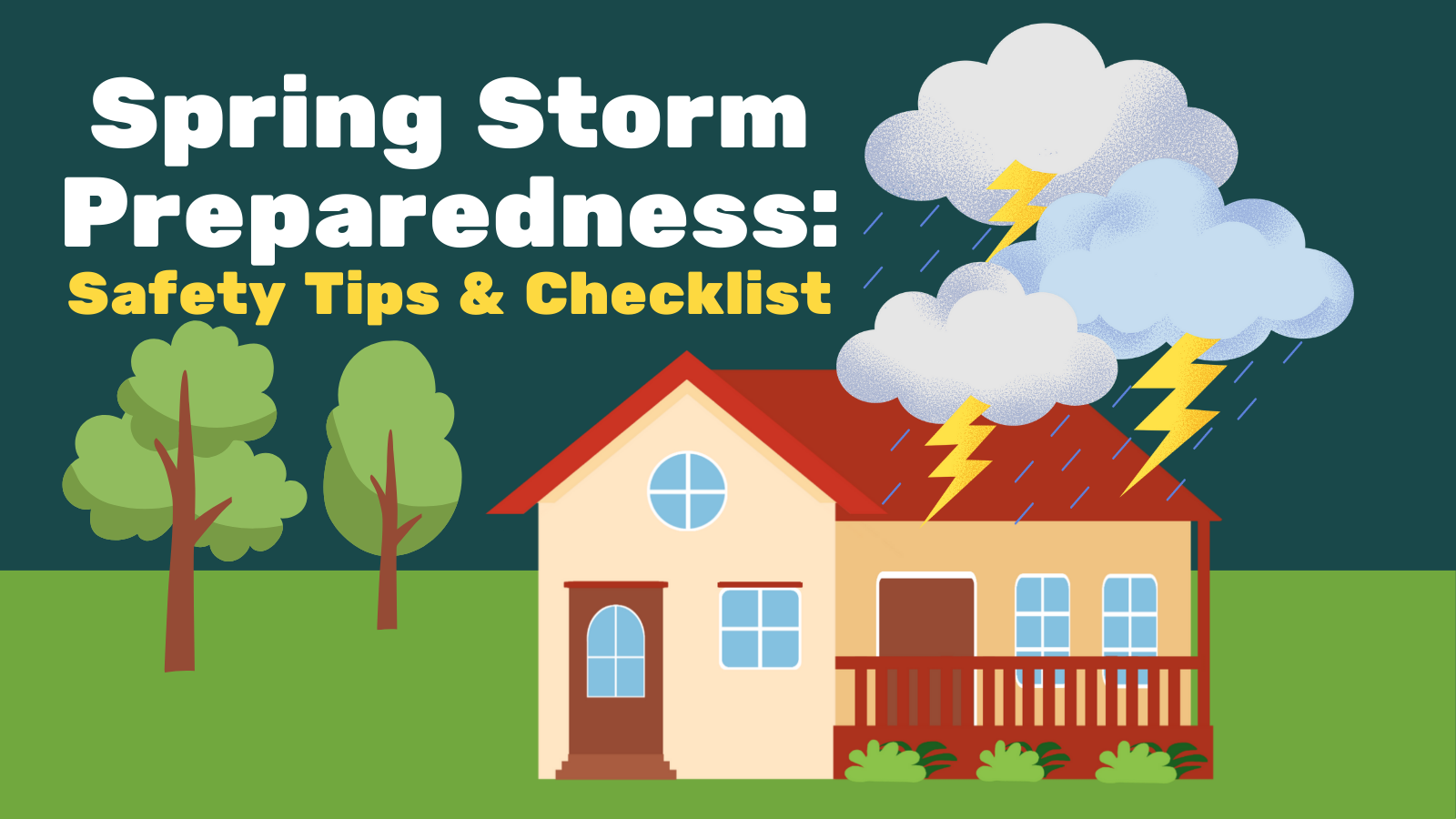News post
News post
Spring Storm Preparedness: Safety Tips & Checklist
March 14, 2024

With temperatures expecting to hit 80 degrees in some areas this week, spring is officially here and it’s time to prepare your home for the possibility of spring thunderstorms and tornadoes. Here are some safety tips and a maintenance checklist to help your home get ready for the upcoming spring storms:
Inspect Your Roof: Before the season of storms begins, check your roof for any signs of damage or wear. Look for missing shingles, cracks, or areas where water could potentially seep in during heavy rain. Repair or report any issues promptly to prevent leaks and water damage. It’s important that this step is done first and with enough time for repairs before spring is in full swing.
Clean Gutters and Downspouts: Clear out any debris, leaves, and twigs from your gutters and downspouts to ensure proper drainage. Clogged gutters can lead to water pooling on your roof or around your foundation, increasing the risk of water damage and flooding.
Trim Trees and Branches: Trim back any overhanging branches that could potentially fall onto your home during a storm. Strong winds can easily break off branches and cause significant damage to your roof or windows.
Secure Outdoor Furniture and Decorations: Patio furniture, grills, and other outdoor decorations can become hazardous projectiles during a storm. Secure or bring them indoors to prevent them from causing damage to your home or neighboring properties. We also suggest dismantling and putting away any outdoor umbrellas.
Check Window and Door Seals: Insect the seals around your windows and doors for any gaps or cracks that could allow water to enter your home. Replace worn weather stripping and seal any openings to keep water out and maintain energy efficiency.
Invest in Storm Shutters or Impact-Resistant Windows: Consider installing storm shutters or impact-resistant windows to protect your home against high winds, flying debris, and hail damage.
Create an Emergency Kit: Assemble an emergency kit containing essentials such as flashlights, batteries, first aid supplies, non-perishable food, water, and a battery-powered radio. Store it in a readily accessible location in case of power outages or evacuation.
Develop a Family Emergency Plan: Discuss and establish a family emergency plan that includes designated meeting spots, evacuation routes, and how you will communicate in case you are separated during a storm and left without power. Determine a central location in the house that is on the ground level (if possible) and has no windows, this spot will be the safest place for you to shelter in the event of hazardous storms.
Stay informed about weather forecasts, heed any warnings or advisories issued by local authorities, and always prioritize safety above all else.